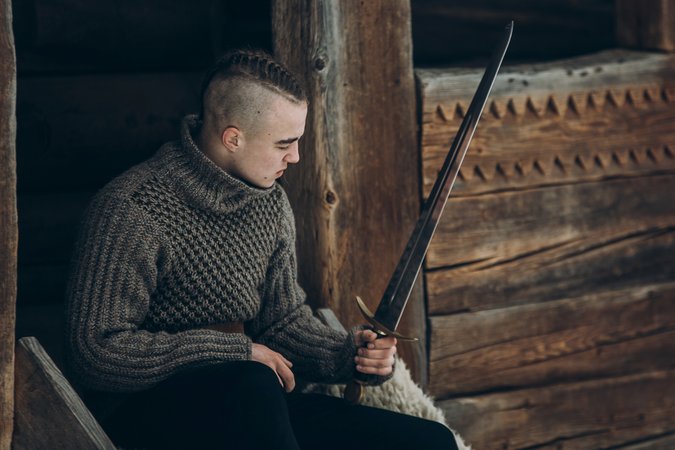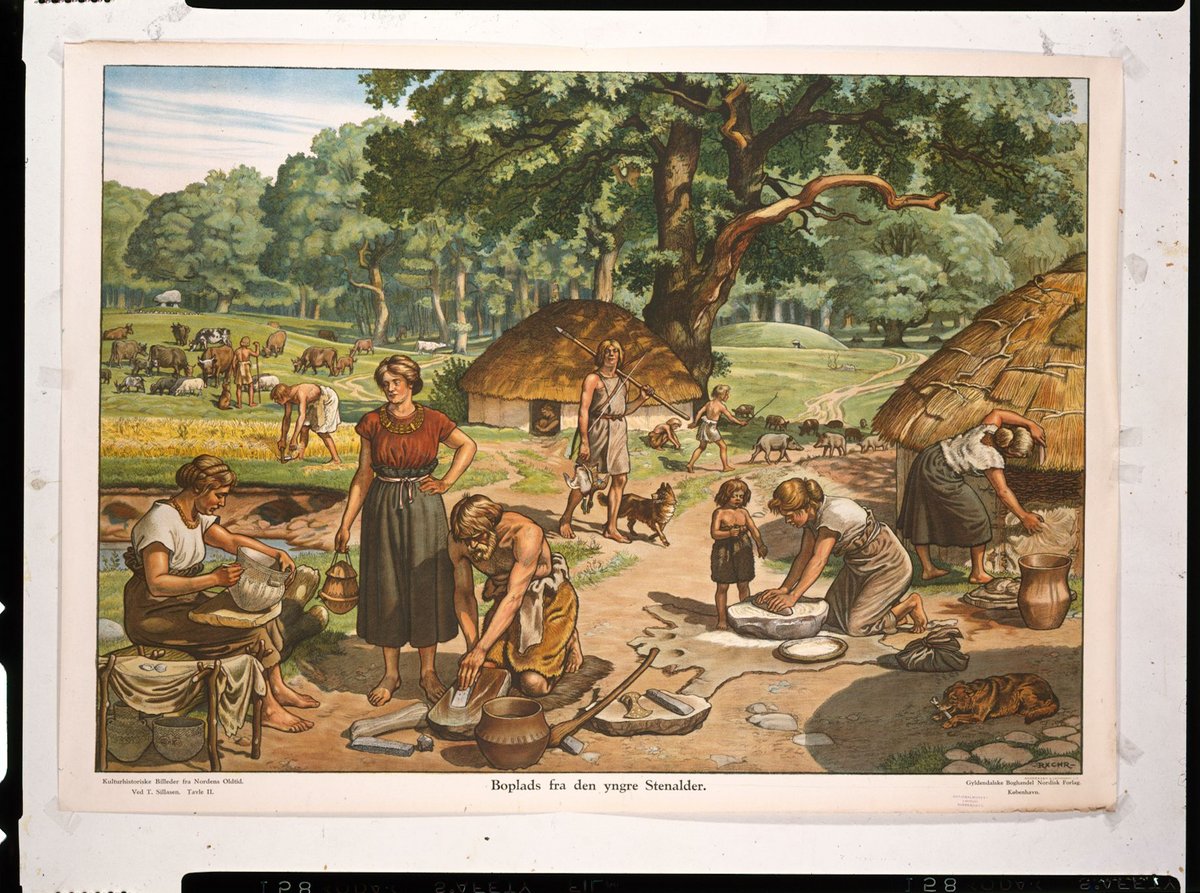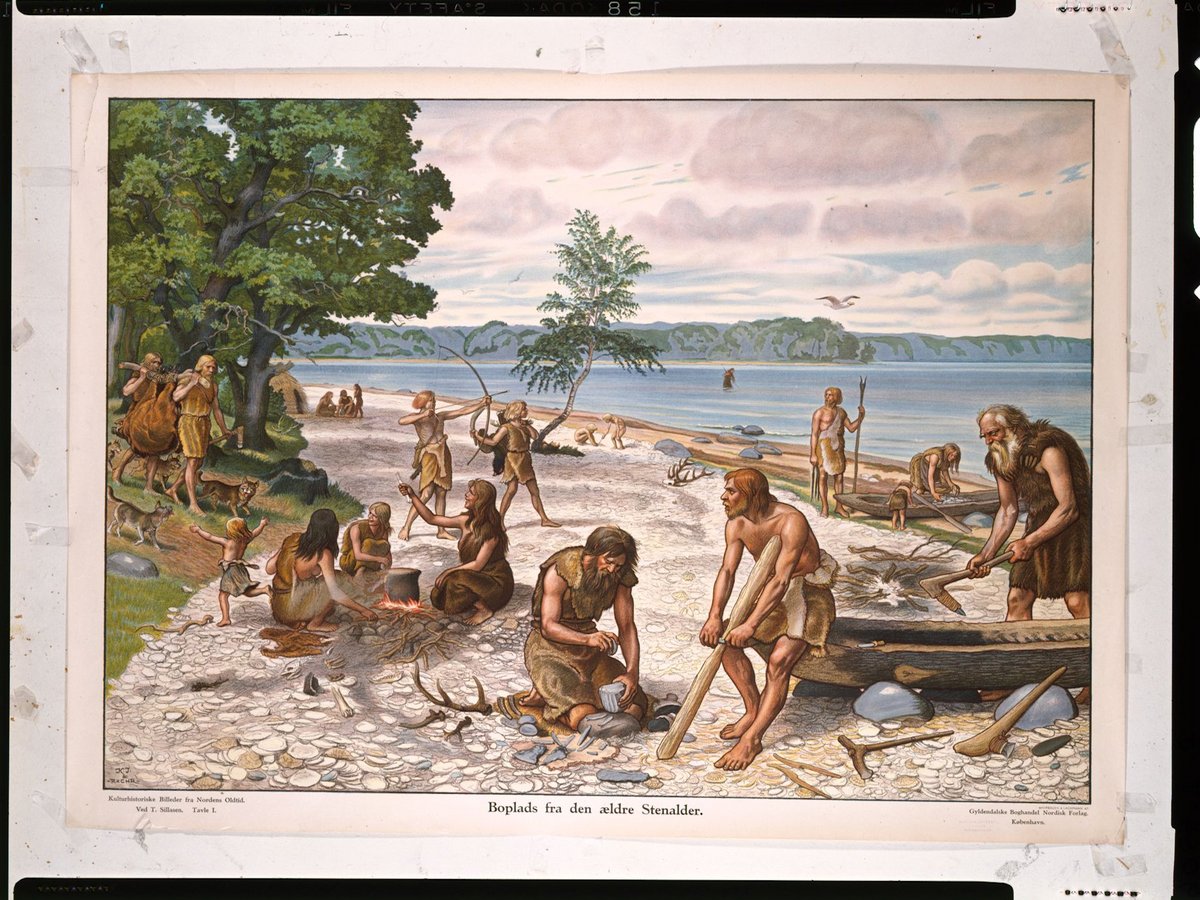Gendering Patterns in Nordic History
Finding the past by constructing gendered and Nordic identities in the present.
Summary: The different ways we interpret and represent the past shape how individual and collective identities are formed and enacted in modern settings. Historical accounts reaching as far back as antiquity include biases about gender, and Nordic national narratives of unity can draw on a fictive collective past based on reproduced stories of shared cultural origins. These are strengthened through being retold again and again, and given authority from their assumed longevity. In the end certain characteristics are considered as essential to being ‘Nordic’ or ‘male’/’female’, although their historical foundations are far from certain.
Keeping the past alive
History and prehistory are used to build heritage discourses, and heritage discourses play into national origin stories, shaping identities in subtle – and sometimes not so subtle – ways. An obvious example in the Nordic countries is the continued active use of Viking heritage. Not only do we use this as shared history to promote a sense of social cohesion and pride in a perceived shared past, we also use it as a very effective tourist magnet, capitalising on this shared history. This is a clever use of heritage discourses, but also a problematic one. In the case of the Viking Age, we have tended to reproduce gender-binary stories of bearded warrior men and bejewelled, contented, housewife women. Although there were male warriors and female housewives in the Viking Age, that is not the whole story – at best it is a partial one. We now know, of course, that men liked wearing jewellery, and women could own and use weapons.

History is a near-ubiquitous mechanism for creating origin stories for instance, used to create a sense of shared values for nations or cultural groups. Our understanding of the past is in many ways crucial to the construction of individual and collective identities in the present. It has an impact on our sense of belonging, national unity and group identities.
Stories about the past are stories about ourselves; the ways in which we interpret and represent the past matter, impacting how identities are formed and enacted in modern settings.
Whilst the misuse of history is obvious in some cases, such as the infamous use of Viking symbolism and mythology by the Third Reich, others are more insidious. Biased stories are not necessarily conscious counterfeits or selective narratives motivated by political ambitions. Rather, they might be continuously produced through the processes of constructing collective understandings of who we are and why. Nordic national narratives of unity can thus be seen to draw, in part, on a (fictive) collective past based on reproduced stories of shared cultural origins.
Moreover, this collective past is selectively created by focusing on, or neglecting, certain aspects of past events and cultures. A sense of shared collective history unites groups of people, but by the same mechanism, they exclude others. In order to understand how modern day Nordic collective identities are curated, it is worth asking: Who is excluded from our narratives of a shared Nordic past? And what consequences may this have for the construction of present identities? In particular, it is worth asking how narratives of past genders play into modern consciousness through the processes of legitimacy that history ascribes.
Filling the gaps in history by creating the past in our own image

A commonly used phrase in archaeology is that the past is a foreign country, used to describe how we ought not construct the past in our own image. Yet we can never avoid the past being built in the present. The type of people we envisage as social actors in the past tend to reflect the kind of people we think of as protagonists in the present.
When we gender the past, we use particular, culturally specific understandings of what gender is and ought to be. However, in doing so, we also legitimate culturally specific understandings of the past because we lend particular social ideologies validity and authority by projecting them on to a distant past. Stories of men who have hunted big game and brought home vital protein and resources for their waiting families are ingrained in the public mind, and indeed in academic research. Those stories however are not based on solid, tangible and irrefutable evidence. In fact, though we certainly know there were men in the past, and we know there was hunting, we rarely know whether or not it was men who did the hunting. Nor do we even know if ‘men’ is a viable social category to apply to all societies. For instance, stable isotope analysis can tell us where an individual grew up and where they travelled, but it cannot tell us why they travelled. This is where the past is constantly (re)created, because ultimately it only exists in our perception of it: a perception that is necessarily culturally contingent and constantly changing. As the philosopher Donna Haraway reminds us, it is always necessary to acknowledge the cultural frameworks which shape how we see the world, and the knowledge that we produce.
Crucially, we do not necessarily place women near the hearth because of archaeological evidence. As generations of feminist scholars have pointed out, there is rarely anything in the empirical data that tells us that women looked after children while men went out to hunt or fight. Rather, we place them there because it makes sense to us: women and children are inextricably linked in Eurocentric thought patterns, just as men are linked with bringing home the food. By projecting this culturally specific model on to the past, we simultaneously lend it authority.
Nineteenth century gender norms influencing today’s archaeology
The ways in which we gender the past leans heavily on the gender norms of the earliest archaeologists. In fact, a specific recipe for gendering graves can be found in the writings of a German antiquarian from the late 1830s, in which jewellery was deemed appropriate for women, while weapons and tools by rights belonged to men. An early recipe for gendering graves was defined by the association of antiquarians in Schwerin, Meklenburg in the 1830s. According to this, jewellery was deemed appropriate for women, whilst weapons and tools should by rights belong to men. This was in keeping with the dominant social ideologies of the time and became the norm for gender-determining burials. The problem here is not that such a system was created in the early ninetteenth century. It is rather that this system has withstood any number of solid theoretically and empirically grounded challenges, and continues to be in use. This is in spite of this way of thinking being shown – repeatedly – to be overly simple, reductionist and at times wildly inaccurate.
Archaeologists continue to use this system when confronted with burial sites and this continues to colour the ways in which we gender the past. Despite repeated arguments against this model furthered by feminist scholars, we gender the past as if it was a middle-class Victorian scene, rarely pausing to question whether or not this model tallies with the evidence at hand.
Perpetuating stereotypes
By constructing a past in our own image, we simultaneously perpetuate the same stereotypes that we project backwards. Ultimately, when continuously told that the gendered patterns that we today consider natural extend back into distant prehistory, these patterns are given legitimacy. They become anchored in antiquity, drawing their authority from their assumed longevity. It becomes crucial therefore, if we are to imagine a different way of gendering the modern world, that we address the false sense of inevitability created by projecting these values on to the past.
It is at this stage that we must stop and acknowledge the power of a shared past. We have seen that this past is created in the present, but also that it is used to recreate and maintain that same present. It is clear then, that archaeology and history are profoundly political. When we tell stories of past human behaviour, we are doing more than piecing together fragments into coherent lives. Ultimately, we are telling stories about how we see the world and our place in it. It becomes imperative, therefore, to ensure that the gendered past we create is more than just a reflection of desired social norms in the present.
It is clear then, that archaeology and history are profoundly political.
In holding up gender stereotypes as natural, we rob ourselves of a diverse and more interesting past. This, in turn, impacts the present in idealising simplistic and gender-binary stories of how to be. We allow these partial stories to enter the cannon of accepted shared history, and they by default become part of our collective identities as we seek to position ourselves in the world. This is the history we promote, and the history we use when we want to show the world who we are. Whom we populate the past with reflects and shapes who we think we are today, and thus is both current, political and important.
Questioning historiographies can shed light on contemporary society.
This article was published in response to readers' interest in cultural heritage and gender.
Further reading:
- Donna Haraway, ‘Situated Knowledges: The Science Question in Feminism and the Privilege of Partial Perspective’, Feminist Theory Reader: local and global perspectives (1988) pp. 412–423.
- Elisabeth Arwill-Nordbladh, Genuskonstruktioner i nordisk vikingatid. Förr och nu [Gender constructions in the Nordic Viking Age. Past and present] (Gothenburg: University of Gothenburg, 1998).
- Ing-Marie Back Danielsson, Masking Moments. The Transitions of Bodies and Beings in Late Iron Age Scandinavia (Stockholm: Stockholm University, 2007).
- Roberta Gilchrist, Gender and Archaeology: Contesting the Past (London: Routledge, 1999).
Links:
- Gendering the Nordic Past (The University of Oslo)


